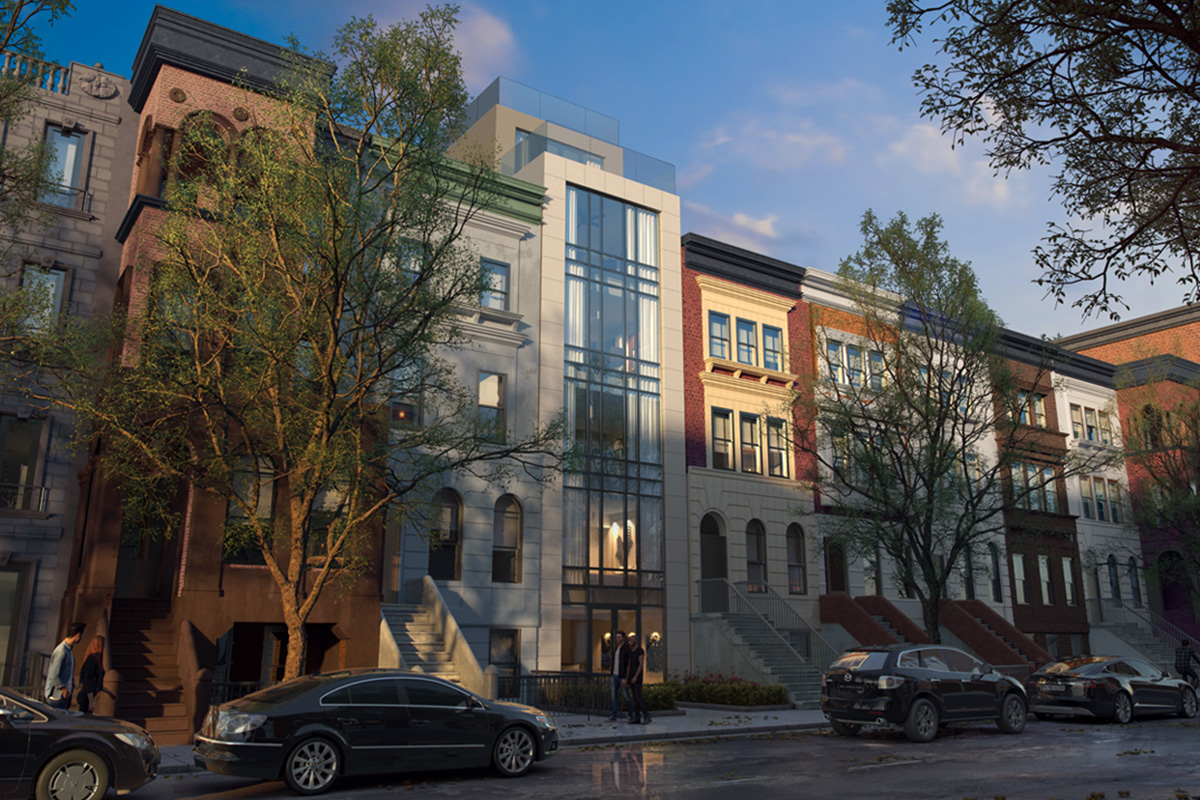
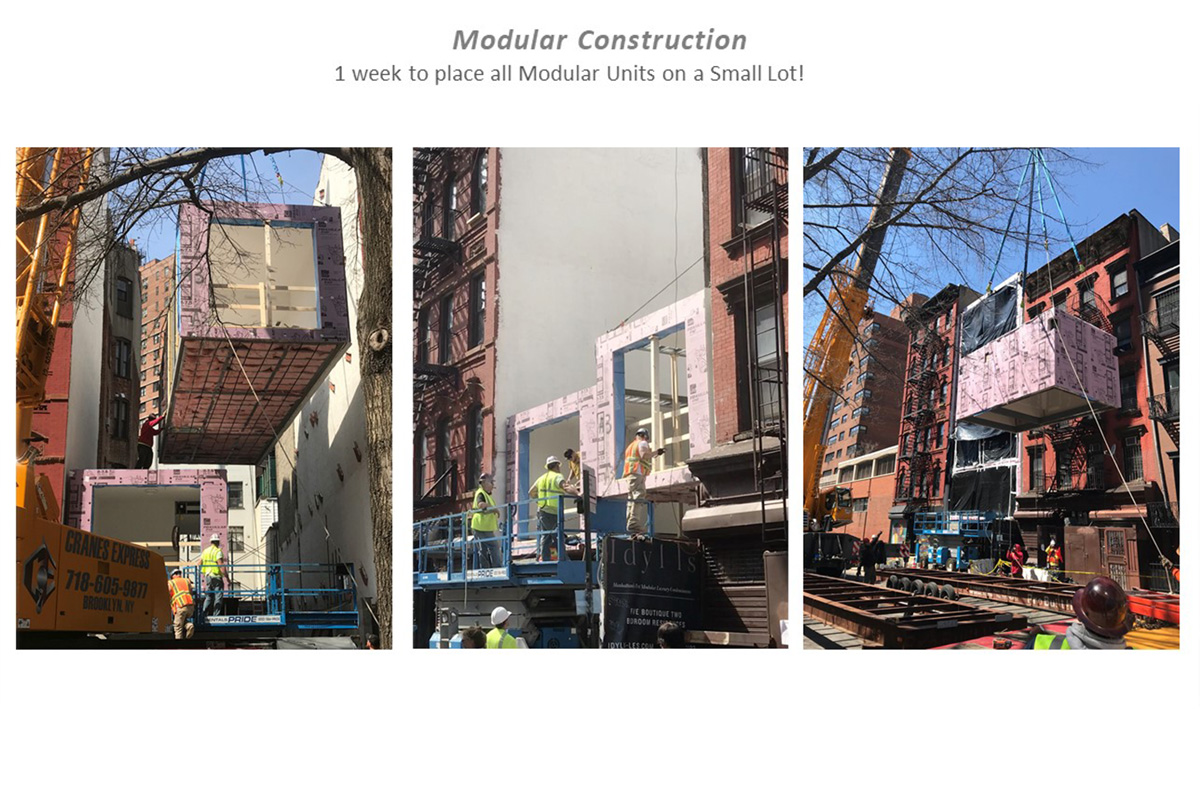
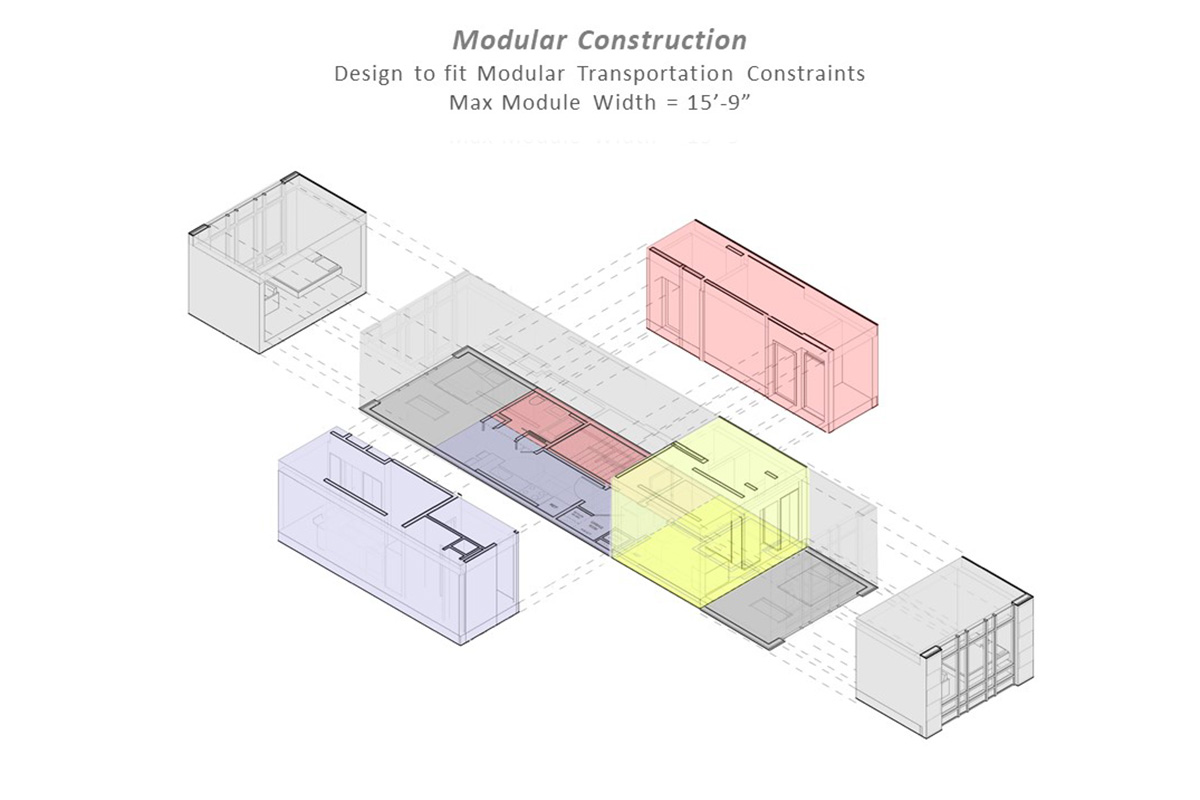
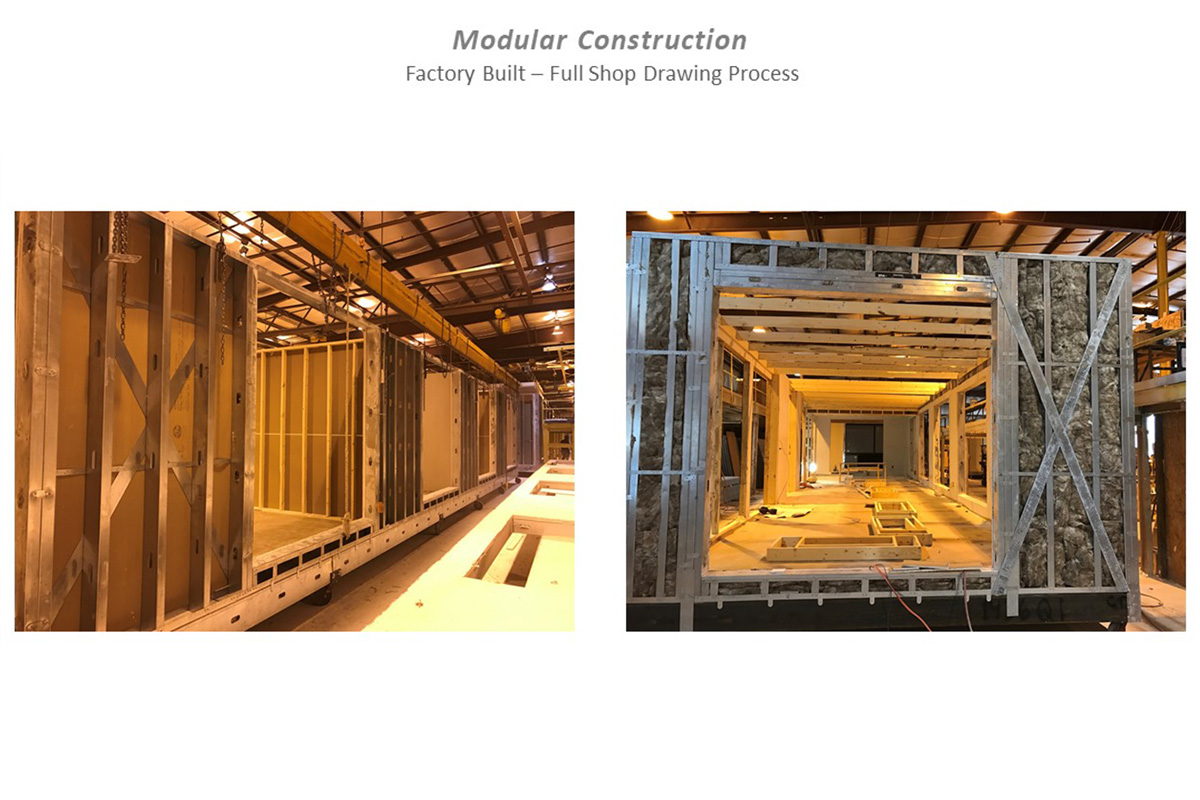
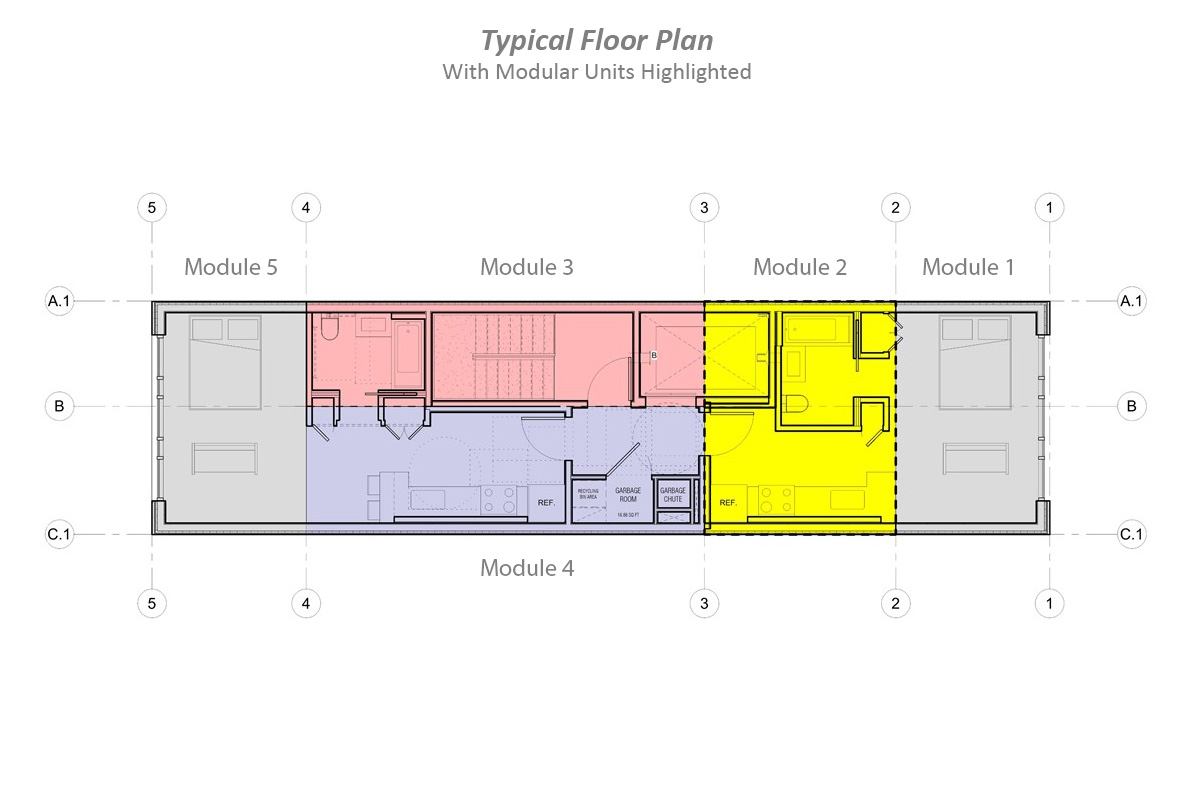
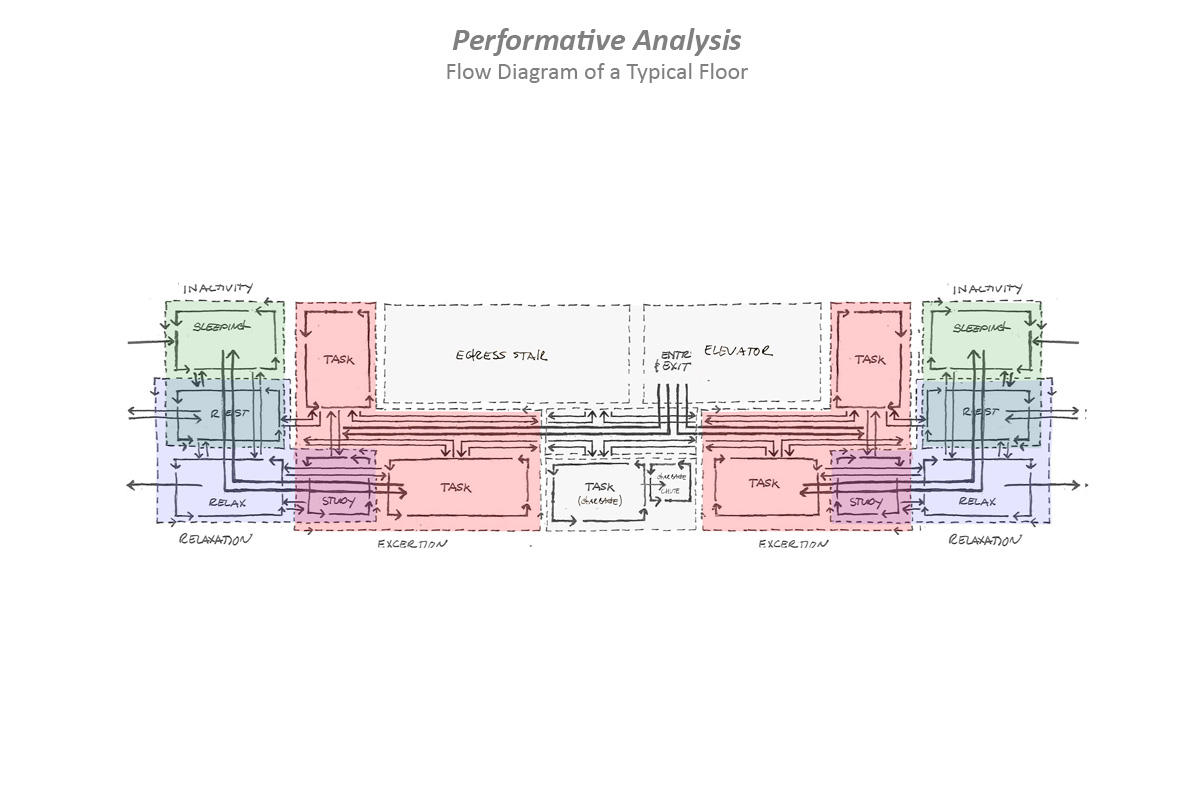
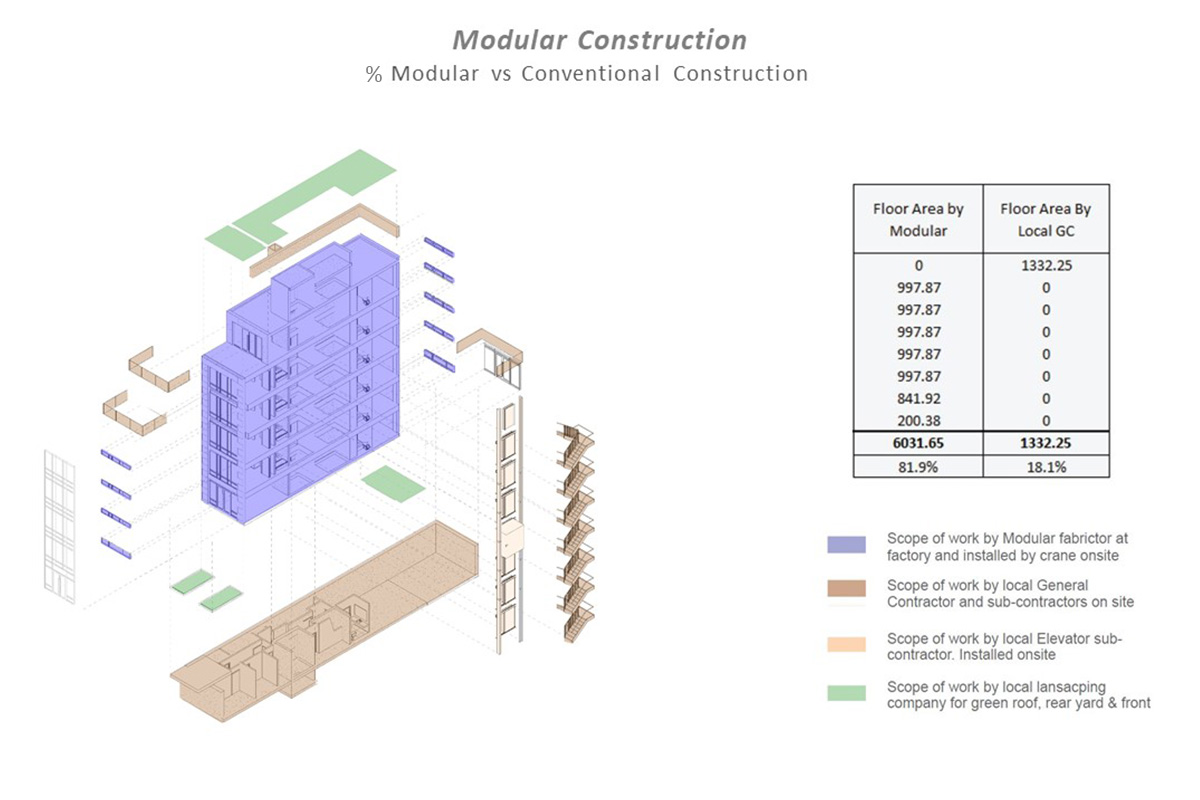
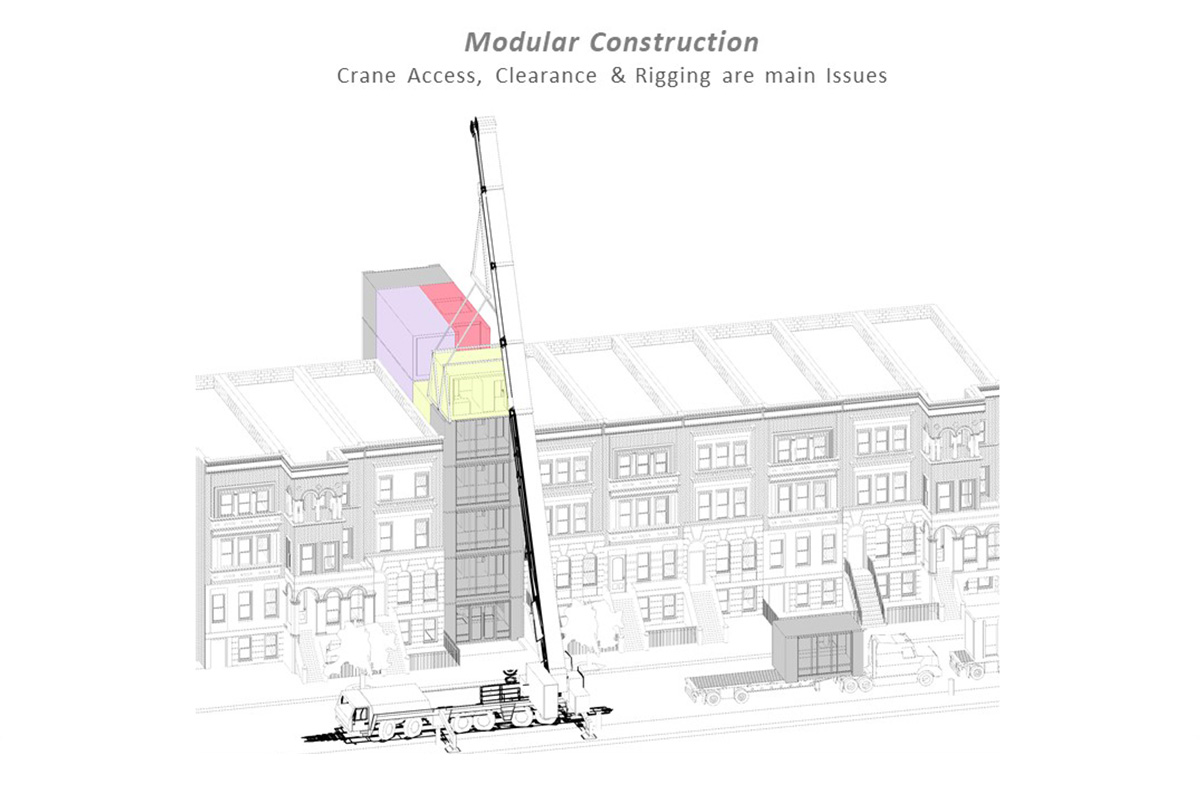
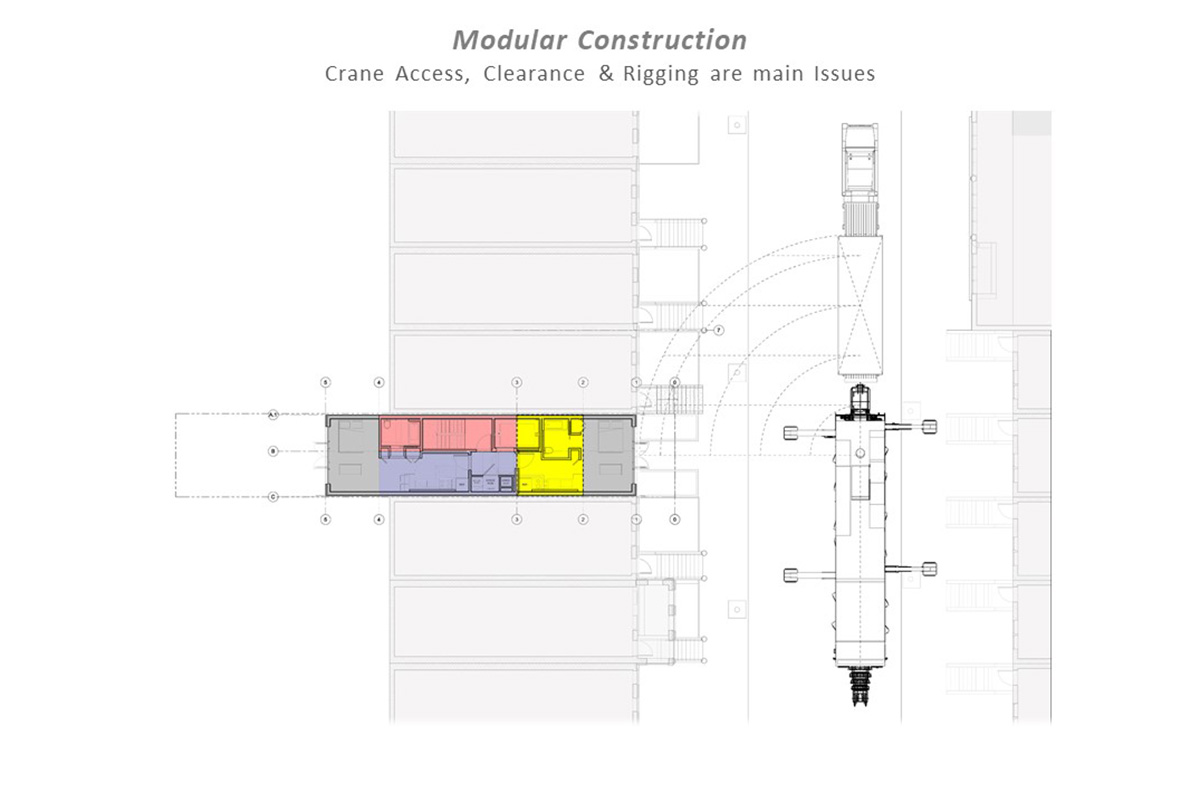
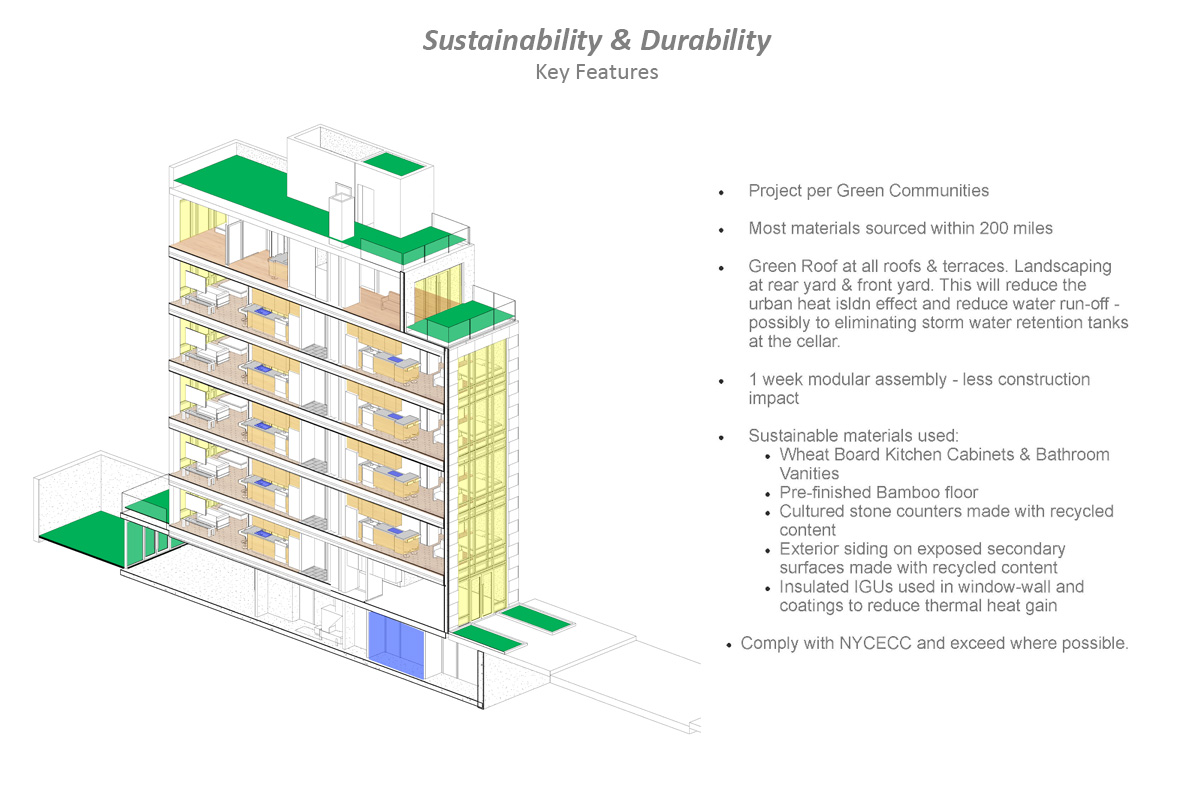
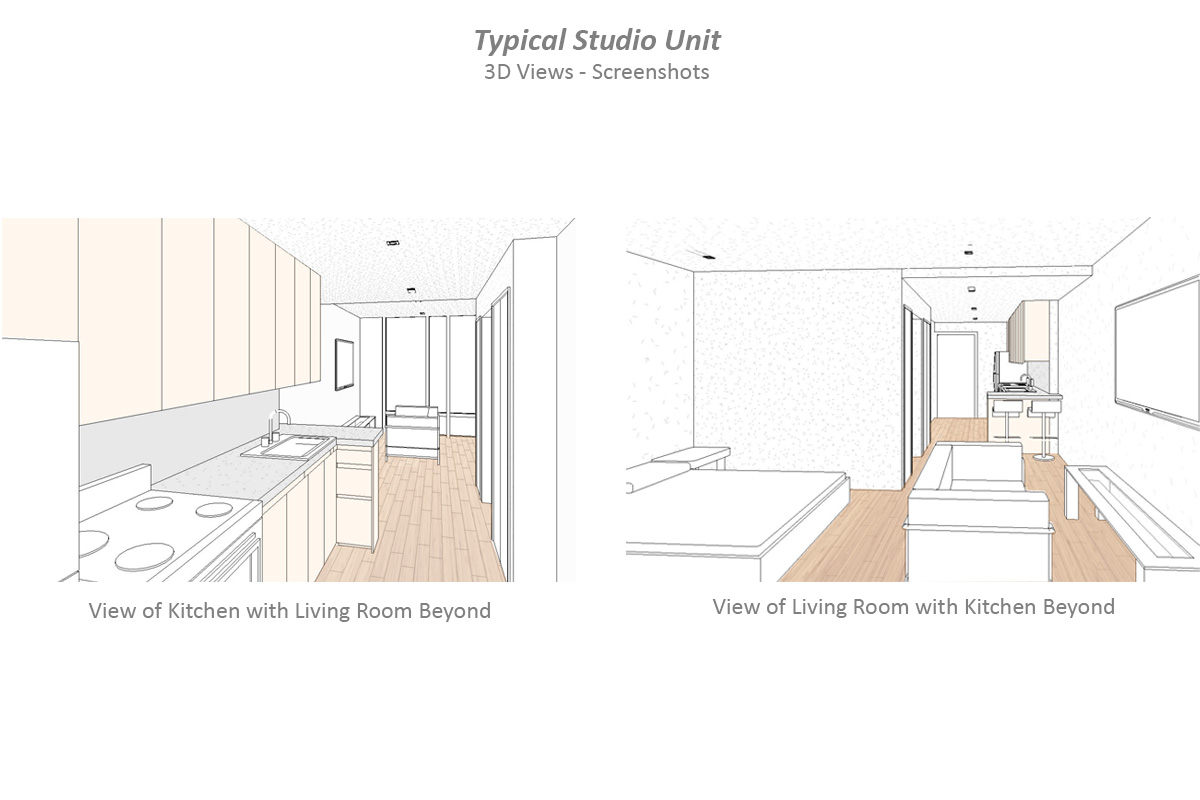
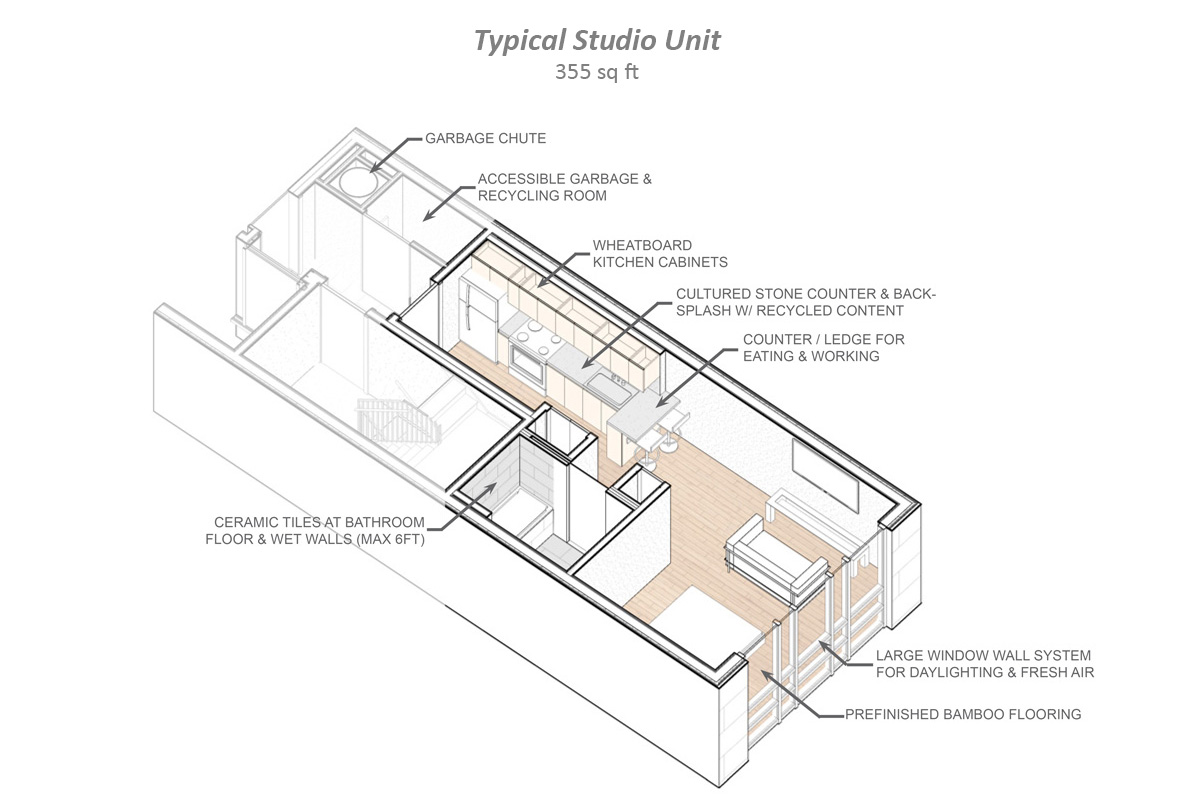
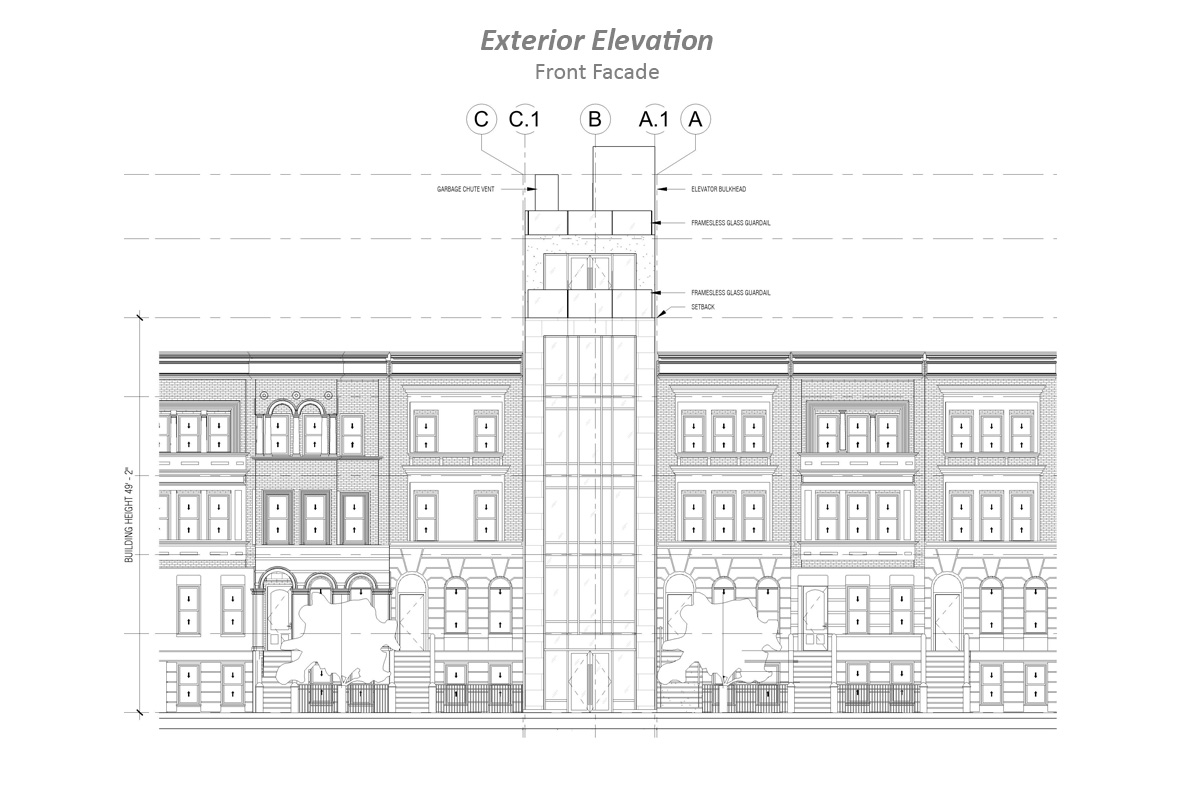


This proposed building was part of Soluri Architecture’s submission to the Big Ideas for Small Lots NYC competition sponsored by the NYC Chapter of the AIA and the NYC Dept. of Housing Preservation (HPD). The competition focused on small-scale, urban infill housing seeking solutions to address the challenges associated with the design and construction of affordable housing on underutilized City-owned land. The competition’s subject lot was a 16′-7″ wide lot in Central Harlem and competition sought proposals with the goals of:
Soluri Architecture’s submission proposed a 6 floor building with 10 affordable housing units, a green roof and a large community room in the cellar. The proposed 7,300sf building utilized modular construction to reduce cost and time while increasing quality.
Modular decreases the time and cost of construction because more than 80% of the building is built in a factory, and requires only 1 week to be installed on-site by a crane and rigging team. This significantly reduces the construction time and the disruption to the neighborhood. Factory construction eliminates the risk of time delays and accidents due to the extremely small sites in this competition. A robust shop drawing process also helps to maintain design consistency between proposed design and budget. Our proposed building utilizes light gauge steel modular construction to keep costs down, and the module sizes conform to the DOT size restrictions (15’-”9 max width). Part of our team included a respected modular manufacturer who has built modular buildings across NYC and the country, providing guidance and technical recommendations.
Our scheme sought to maximize the unit count by placing two studio apartments per floor and provided a fully accessible elevator and garbage chute system. The proposed facade sought to integrate a clean, contemporary aesthetic within the row of neighboring historical brownstones. We sought a respectful and restrained design that relates to its elegant neighbors through alignments & proportions while limiting the height to better fit into the context. Cultured stone panels that evoke the neighboring materiality are used to frame the contemporary glazing.